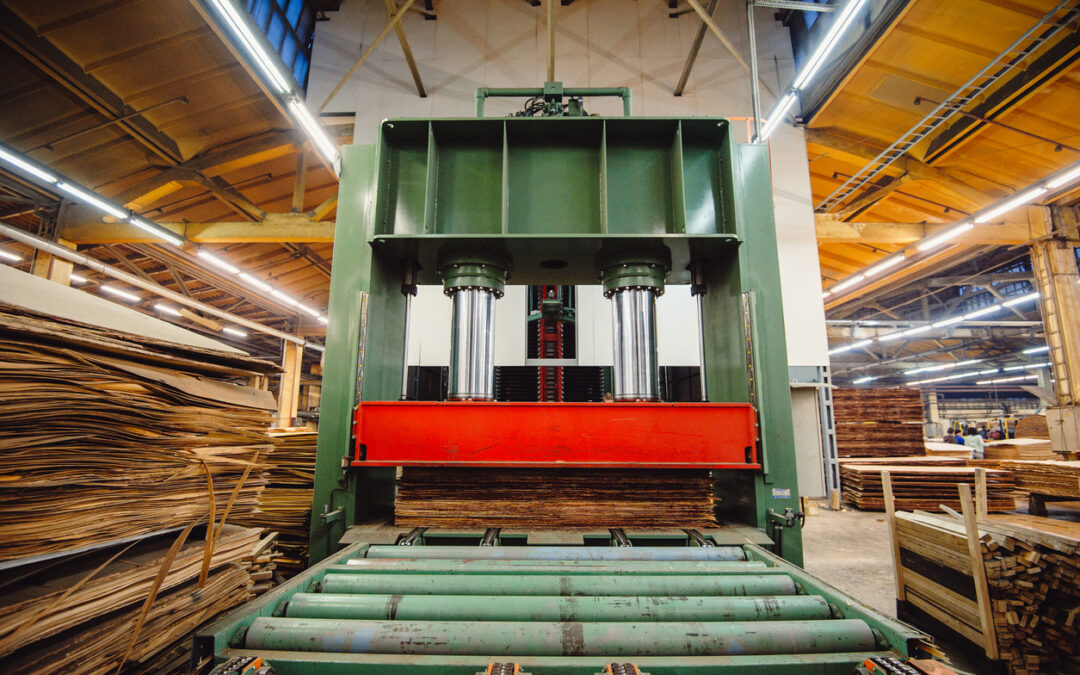Powering Our Modern World
Before we dive into the applications of hydraulics, let’s quickly understand how these systems work. Hydraulic systems operate on a simple principle: when pressure is applied to a fluid in a closed system, that pressure is transmitted equally in all directions. This principle, known as Pascal’s Law, allows hydraulic systems to multiply force, making it possible to lift heavy loads or apply precise pressure with relatively little input force. The basic components of a hydraulic system include a reservoir, pump, valves, and actuators, all connected by hoses or pipes filled with hydraulic fluid.
Have you ever wondered what makes your car brake smoothly or how massive construction cranes lift heavy loads? The answer lies in hydraulics, a technology that’s all around us, yet often goes unnoticed.
Hydraulic systems use fluid under pressure to move machines and do work. They’re like the muscles of the modern world, quietly powering many aspects of our lives. Let’s take a closer look at where you might encounter hydraulics in your day-to-day activities.
Starting Your Day with Hydraulics
Your morning routine probably involves hydraulics without you even realizing it. That office chair you sit in? It uses a hydraulic system to adjust its height. Even flushing the toilet relies on a simple form of hydraulics.
As you head out, you might take an elevator down to the ground floor. Many elevators use hydraulic systems to move smoothly between floors. And if you drive to work, your car is full of hydraulics – from the brakes to the power steering.
But did you know that hydraulics are also at work in your kitchen? Many dishwashers use hydraulic systems to boost water pressure for more effective cleaning. Even that smooth-closing cabinet drawer might be using hydraulic dampers to prevent slamming.
Hydraulics at Work
In the workplace, hydraulics play a crucial role across many industries. Construction sites buzz with hydraulic-powered equipment like excavators and bulldozers. These machines can move tons of earth and materials, thanks to the force-multiplying effect of hydraulics.
Factories rely heavily on hydraulic systems too. Assembly lines use hydraulic robotic arms to lift and place heavy parts with precision. Even the process of shaping metal parts often involves hydraulic presses that can exert enormous force.
Farmers also depend on hydraulics. Modern tractors and harvesters use hydraulic systems to power their various attachments, making planting and harvesting much more efficient.
The marine industry is another major user of hydraulic technology. Ships use hydraulic systems for steering, operating loading ramps, and controlling cargo doors. These applications need to withstand the corrosive effects of saltwater and function reliably in all weather conditions.
In the oil and gas sector, hydraulics play a vital role in drilling operations. Hydraulic systems power the massive drills used to extract oil from deep within the Earth, controlling the pressure and movement of these complex machines.
Hydraulics in Our Leisure Time
When you’re having fun, hydraulics are often working behind the scenes. That thrilling roller coaster ride at the amusement park? Hydraulics help control its movement and ensure your safety. Even the special effects in your favorite action movies might rely on hydraulic systems to create dramatic explosions or flip cars.
If you enjoy boating, you’re experiencing hydraulics in action. Many boats use hydraulic steering systems for smoother control on the water.
But hydraulics in leisure extend beyond thrill rides and boating. Have you ever marveled at a fountain display in a public square? Many of these are controlled by sophisticated hydraulic systems that create intricate water patterns. In sports, hydraulic systems are used in stadium roofs that can open and close, ensuring events can proceed regardless of weather conditions.
In theaters, hydraulics power moving stages and complex set pieces, enabling dramatic scene changes and special effects. From raising and lowering curtains to moving entire sections of the stage, hydraulics help create the magic of live performances.
Hydraulics in Essential Services
Hydraulics also play a vital role in keeping our cities running smoothly. Garbage trucks use hydraulic systems to lift and compact trash. Fire trucks rely on hydraulics to raise their ladders and pump water at high pressures.
In hospitals, hydraulic systems allow for easy adjustment of beds and operating tables, helping medical professionals provide better care.
But the role of hydraulics in essential services goes even further. In waste management facilities, hydraulic systems are used in sorting and recycling processes. They power compactors and balers that process recyclable materials efficiently. In water treatment plants, hydraulic systems control valves and pumps that manage water flow through various stages of purification.
During winter, hydraulics keep our roads clear. Snowplows use hydraulic systems to adjust the angle and pressure of their blades, efficiently moving snow off roads and highways.
Hydraulics in Accessibility and Daily Life
Hydraulic systems play a crucial role in making the world more accessible. Wheelchair lifts and accessibility ramps often use hydraulics to provide smooth, reliable operation. These systems help ensure that public spaces and transportation are available to everyone, regardless of mobility challenges.
In the food industry, hydraulics are more prevalent than you might think. Bakeries use hydraulic systems in the mass production of bread and pastries. These systems help with tasks like dividing dough, moving products along conveyor belts, and packaging.
The printing industry also relies heavily on hydraulics. Modern printing presses use hydraulic systems to control the pressure and alignment of printing plates, ensuring high-quality, consistent results at high speeds.
Maintaining Hydraulic Systems
Given the crucial role hydraulic systems play in so many applications, proper maintenance is essential. Regular care not only ensures optimal performance but also extends the life of the system and prevents costly breakdowns.
Key aspects of hydraulic system maintenance include:
- Regular fluid checks and changes: Hydraulic fluid can degrade over time, losing its effectiveness and potentially damaging components.
- Keeping the system clean: Contamination is a major cause of hydraulic system failure. Regular cleaning and proper filtration are crucial.
- Inspecting for leaks: Even small leaks can lead to significant issues if left unchecked.
- Monitoring system temperature: Overheating can degrade the hydraulic fluid and damage seals.
- Checking and replacing filters: Clogged filters can lead to poor system performance and component damage.
By following a regular maintenance schedule, operators can ensure their hydraulic systems continue to function efficiently and reliably.
The Future of Hydraulics
As technology advances, hydraulic systems are becoming more efficient and environmentally friendly. Engineers are developing new ways to use hydraulics in renewable energy, like adjusting the blades on wind turbines or controlling the movement of wave energy converters.
One exciting area of development is in hydraulic hybrid vehicles. These vehicles use hydraulic accumulators to store energy from braking, which can then be used to assist acceleration. This technology has the potential to significantly improve fuel efficiency in vehicles that frequently start and stop, like delivery trucks or buses.
Another frontier for hydraulics is in robotics and prosthetics. Engineers are developing compact, powerful hydraulic systems that can mimic human muscle movements, potentially revolutionizing mobility assistance for individuals with disabilities.
From the moment you wake up to when you go to bed, hydraulics are working hard to make your life easier and more comfortable. Next time you see a big machine at work or enjoy a smooth car ride, remember the hidden force of hydraulics making it all possible. As we continue to innovate, the applications of hydraulics will only grow, shaping our world in ways we’re just beginning to imagine.
Expert Hydraulic Solutions with Texas Hydrostatics
Whether you’re operating heavy machinery, managing a manufacturing plant, or responsible for fleet vehicles, the reliability of your hydraulic systems is crucial to your operations. At Texas Hydrostatics, we understand the vital role these systems play in your day-to-day activities.
With over 35 years of experience, our team of experts, led by head hydrostatic engineer Steve Seckel, provides top-notch hydraulic repair, maintenance, and remanufacturing services. We specialize in hydraulic pumps, motors, and cylinders, ensuring your equipment performs at its best.
Don’t wait for a hydraulic failure to disrupt your operations. Contact Texas Hydrostatics today for a consultation on how we can help maintain, repair, or upgrade your hydraulic systems. Let us put our expertise to work for you, keeping your hydraulic-powered equipment running smoothly and efficiently.

